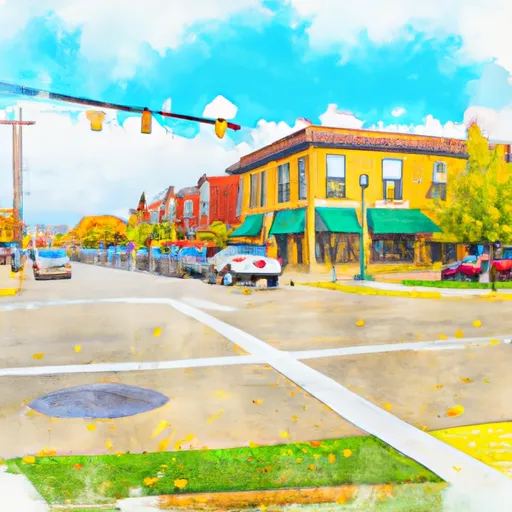°F
°F
mph
Windspeed
%
Humidity











Maumee, Ohio is a charming city located in Lucas County, situated on the banks of the Maumee River. The climate in Maumee is classified as humid continental, characterized by hot summers and cold winters. Average temperatures range from around 32°F (0°C) in winter to 82°F (28°C) in summer. Precipitation is evenly distributed throughout the year, with an average annual rainfall of 34 inches (86 cm). The region experiences occasional thunderstorms and is subject to lake-effect snow during winter months.
The Maumee River, an essential hydrological feature, flows through the city, offering various recreational opportunities. Fishing enthusiasts can enjoy catching a variety of species, including walleye, bass, and catfish. Kayaking and canoeing are popular activities, allowing visitors to explore the scenic river and its picturesque banks.
Maumee also boasts several parks and green spaces, such as Side Cut Metropark and Oak Openings Preserve. Side Cut Metropark offers hiking trails, picnic areas, and a beautiful riverfront view. Oak Openings Preserve, a short drive from Maumee, features sand dunes, woodlands, and rare plant species, providing opportunities for hiking, birdwatching, and nature photography.
Overall, Maumee, Ohio offers a diverse climate, a prominent river system, and ample outdoor recreation options, making it an attractive destination for nature lovers and outdoor enthusiasts alike.
Weather Forecast
Maumee receives approximately 882mm of rain per year, with humidity levels near 83% and air temperatures averaging around 10°C. Maumee has a plant hardyness factor of 6, meaning plants and agriculture in this region thrive during a short period during spring and early summer. Most plants will die off during the colder winter months.
Regional Streamflow Levels
47
Cubic Feet Per Second
24
Cubic Feet Per Second
56
Cubic Feet Per Second
87
Cubic Feet Per Second
Nearby Camping
| Camping Area | Reservations | Toilets | Showers |
|---|---|---|---|
| Camp Dearborn | |||
| Highland State Rec Area | |||
| Groveland Oaks County Park | |||
| Proud Lake State Rec Area | |||
| Pontiac Lake State Rec Area | |||
| Bishop Lake - Brighton Rec Area |



